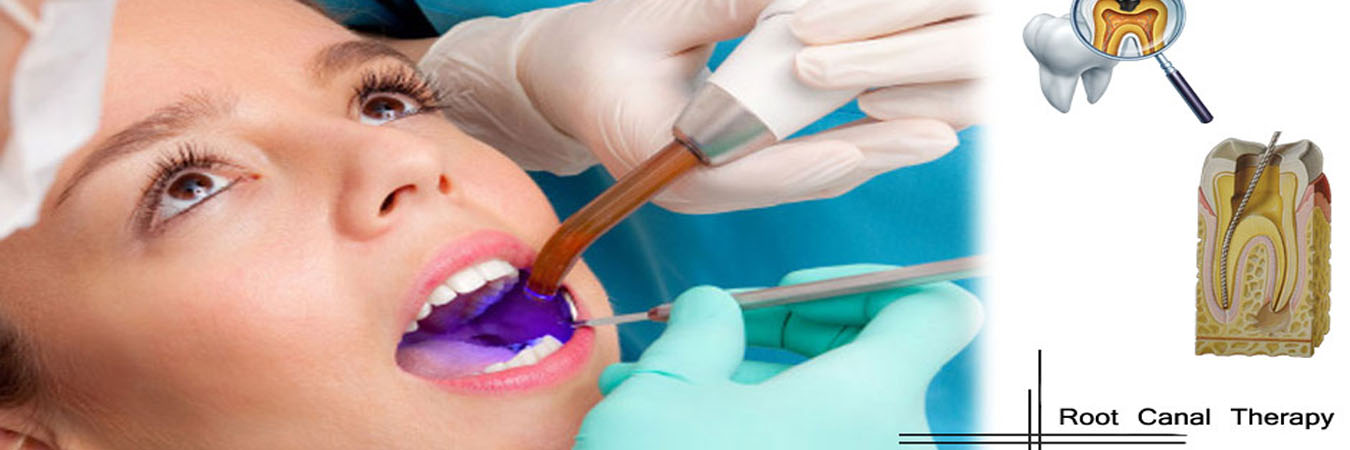
Root Canal Therapy
Endodontic therapy or root canal therapy, colloquially root canal, is a sequence of treatment for the pulp of a tooth which results in the elimination of infection and protection of the decontaminated tooth from future microbial invasion. This set of procedures is commonly referred to as a “root canal”. Root canals and their associated pulp chamber are the physical hollows within a tooth that are naturally inhabited by nerve tissue, blood vessels and other cellular entities.
Endodontic therapy involves the removal of these structures, the subsequent shaping, cleaning, and decontamination of the hollows with tiny files and irrigating solutions, and the obturation filling) of the decontaminated canals with an inert filling such as gutta-percha and typically a eugenol-based cement. Epoxy resin, which may or may not contain Bisphenol A is employed to bind gutta-percha in some root canal procedures. The standard filling material is gutta-percha, a natural polymer prepared from latex from the percha Palaquium gutta) tree.

The standard endodontic technique involves inserting a gutta-percha cone (a “point”) into the cleaned-out root canal along with cement and a sealer.[5] Another technique uses melted or heat-softened gutta-percha which is then injected or pressed into the root canal passage(s). However, as gutta-percha shrinks as it cools, thermal techniques can be unreliable and sometimes a combination of techniques is used. Gutta-percha is radiopaque, allowing verification afterwards that the root canal passages have been completely filled in, without voids.
